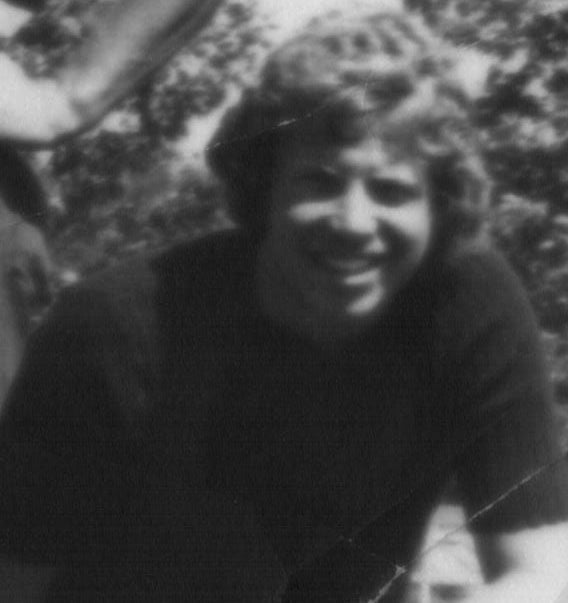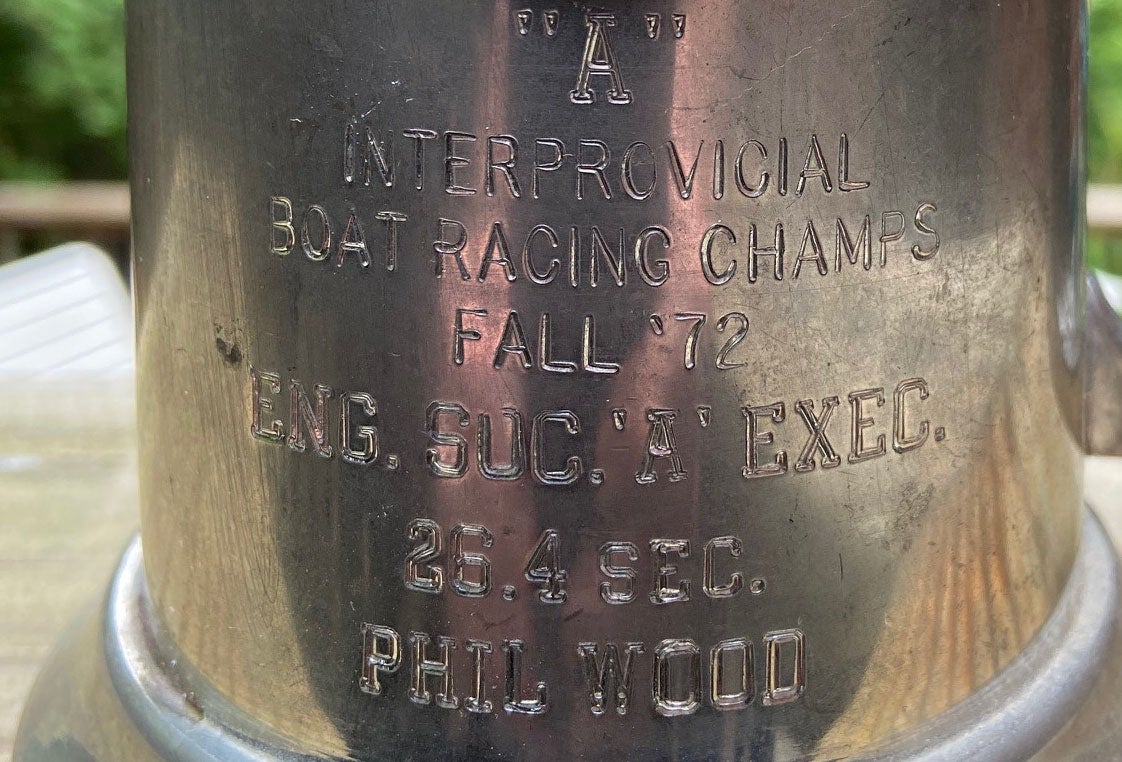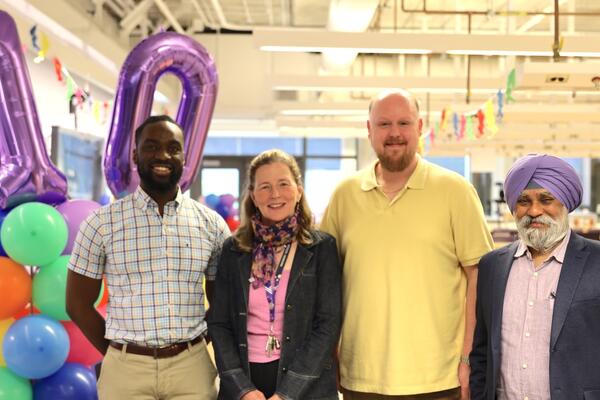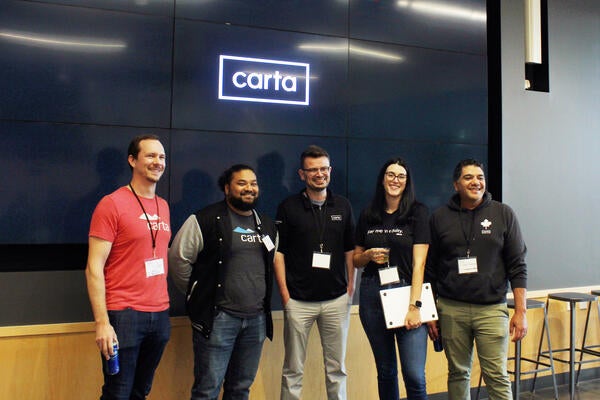
A home run
Chemical engineering students scored 24 warm beers and a trophy with a typo in the '70s

Chemical engineering students scored 24 warm beers and a trophy with a typo in the '70s
By Carol Truemner Faculty of EngineeringWhen Phil Wood talks about two major victories during his time as a Waterloo student in the early 1970s, he tends to remember the prizes much more than some of the other details.
Fifty years after the 1973 chemical engineering grad and his classmates* captured first place in the Waterloo Engineering Society softball tournament, Wood can’t recall the score of the winning game.
Wood can’t recall the score of the winning game.
He does, though, fondly think back on the award – a case of beer placed in Laurel Creek first thing in the morning but no longer cold when his victorious team drank it later that afternoon.
Phil Wood, catcher on the 1971 chemical engineering softball team
Wood says the star on that sweltering July 1971 day was pitcher Jim Cockburn (BASc ’73, chemical engineering).
“I think we were all about equally athletic except for Jim,” explains Wood, who was the team’s catcher. “Having a good pitcher really made a difference.”
Playing four games almost continuously in a treeless area beside the University’s Village One residence and Laurel Creek, the 3A chemical engineering students clinched the tournament about 5 p.m.
The hot and exhausted team members celebrated by somewhat quenching their thirst with 24 warm Labatt 50s, brewed a few blocks away in Waterloo at the time.
“There was no such thing as water bottles to keep hydrated in those days,” says Wood.
Still savouring their win, the classmates ended up at a friend’s house after the tournament to continue marking their accomplishment with colder beers.
Beer also featured prominently in a victory Wood was part of the following year.
In the fall of 1972, Waterloo Engineering Society A entered a team into the interprovincial Engineering Society Boat Racing – aka beer drinking – Championship.
Once again, Wood’s team won, this time by consuming 10 beers in just 26.4 seconds.
The event’s trophy, one of several Wood showcases at his Dundas, Ontario home, has been a topic of conversation over the past 49 years, but usually not for the achievement it represents.
the achievement it represents.
Wood, a chemical engineering professor at McMaster University from 1983 until he retired in 2018, would make a point of telling his students that the trophy was legitimate because of a typo in the inscription.
“I would tell my students, ‘the way you know it’s 100 per cent true that it was an engineering event is because Interprovincial is spelled Interprovicial,’” he laughs. “That became a favourite topic of discussion in the classroom throughout the years.”
*Banner photo features the 1971 winning Waterloo EngSoc softball team. Standing from left: Jens Koepke, Jim Cockburn, Jim Malough, Gerry Willard, Larry Westlake and Ron Paradis. Kneeling from left: John Trought, Neil Winter, Bob Dalrymple, Ron Ferris, Henri Huneault, Al Belchar and Phil Wood.

Read more
The Pearl Sullivan Engineering IDEAs Clinic marks a decade of delivering experiential learning embedded in the real world and mentored by industry professionals

Read more
From AI-powered cap tables to complex valuation tools, Waterloo co-op students drive Carta’s innovation while shaping its engineering talent strategy

Read more
From co-op to community, grads offer insights and inspiration for the next generation of students
The University of Waterloo acknowledges that much of our work takes place on the traditional territory of the Neutral, Anishinaabeg, and Haudenosaunee peoples. Our main campus is situated on the Haldimand Tract, the land granted to the Six Nations that includes six miles on each side of the Grand River. Our active work toward reconciliation takes place across our campuses through research, learning, teaching, and community building, and is co-ordinated within the Office of Indigenous Relations.